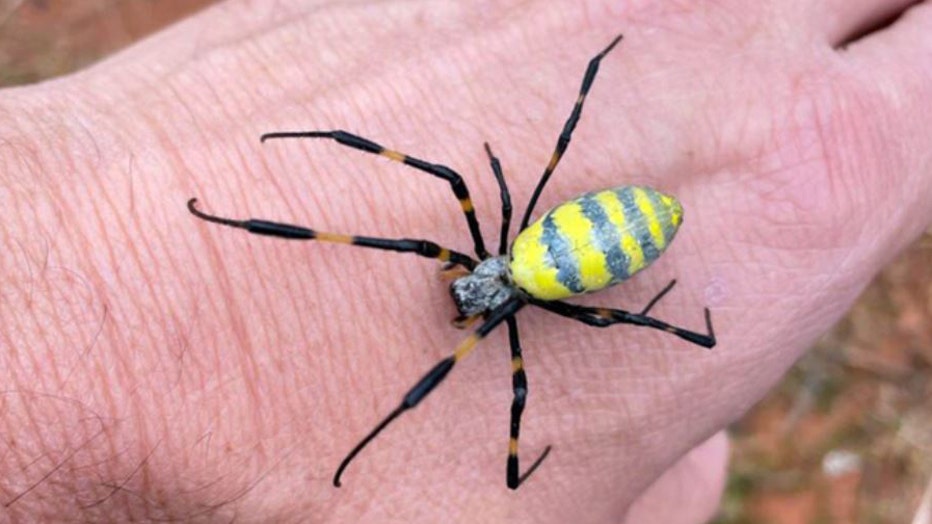East Coast braces for invasion of palm-sized venomous spiders capable of flying
The large and brightly colored Joro spider is easily noticeable. Native to Southeast Asia and Japan, the eight-legged spawn of the golden orb-weavers was first found about 2013 in Georgia and has since spread across the state and into the Southeast.
NEW YORK - Giant venomous flying spiders may soon start moving northward across the Northeast.
The large and vividly colored Joro spider, with its 4-inch-long legs enabling it to glide through the air, might reach as far north as New Jersey this summer, New Jersey Pest Control warned earlier this year.
"As the Joro spider invasion continues its northward trajectory, the possibility of their arrival in New Jersey later this year has heightened concerns among residents and authorities alike," the company said. "The potential for these spiders to establish populations in new regions raises questions about how local ecosystems will respond and adapt to their presence."
PARACHUTING, PALM-SIZED SPIDERS, AIDED BY COLD TEMPS, LIKELY TO INVADE EAST COAST
Since 2021, these arachnids, believed to have infiltrated the southeastern U.S. from Japan, have been a major focus of attention. According to FOX 35 Orlando, the Joro spider’s golden web has already been spotted in Georgia and South Carolina.
The eight-legged spawn of the golden orb-weaver was first found in Georgia about nine years ago. Research from the University of Georgia suggests the invasive arachnids will start crawling through most of the Eastern Seaboard of the U.S.
They grow throughout the summer but are most noticeable in the fall when they reach adult size.
Joro spiders have twice as high a metabolism and a 77% higher heart rate when exposed to low temperatures. They can also survive better in a brief freeze, suggesting they can exist in a colder climatic region than the Southeast.

A photo of a Joro spider. (David Coyle/Clemson University)
Researchers are working to manage the Joro spider invasion by monitoring their spread and studying their behavior.
"Understanding the biology and ecology of these spiders is essential in developing effective strategies for mitigating their impact," New Jersey Pest Control said.
If you ever encounter a Joro spider, don’t be alarmed. They are very skittish.
Scientists said they have a neurotoxin venom used to immobilize their prey; however, it is not very potent and only causes some redness and blistering to people, except those with allergic reactions.
Get the latest updates on this story at FOXWeather.com

